Input interpretation

triphenylethylene
Chemical names and formulas
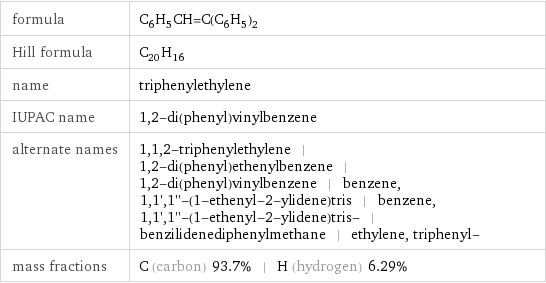
formula | C_6H_5CH=C(C_6H_5)_2 Hill formula | C_20H_16 name | triphenylethylene IUPAC name | 1, 2-di(phenyl)vinylbenzene alternate names | 1, 1, 2-triphenylethylene | 1, 2-di(phenyl)ethenylbenzene | 1, 2-di(phenyl)vinylbenzene | benzene, 1, 1', 1''-(1-ethenyl-2-ylidene)tris | benzene, 1, 1', 1''-(1-ethenyl-2-ylidene)tris- | benzilidenediphenylmethane | ethylene, triphenyl- mass fractions | C (carbon) 93.7% | H (hydrogen) 6.29%
Lewis structure
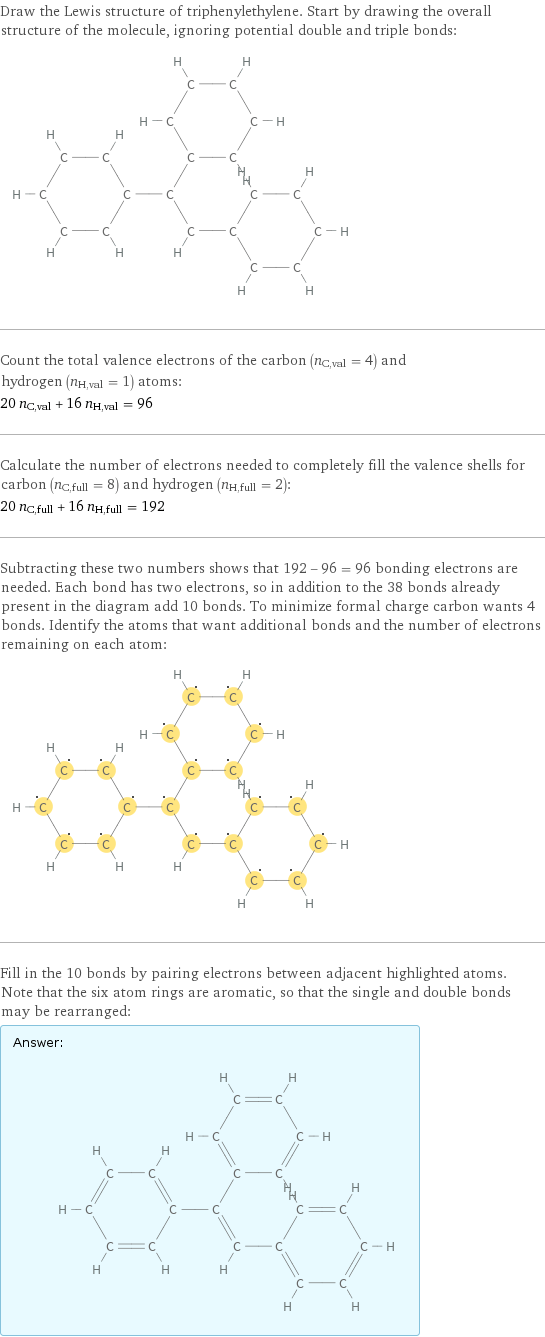
Draw the Lewis structure of triphenylethylene. Start by drawing the overall structure of the molecule, ignoring potential double and triple bonds: Count the total valence electrons of the carbon (n_C, val = 4) and hydrogen (n_H, val = 1) atoms: 20 n_C, val + 16 n_H, val = 96 Calculate the number of electrons needed to completely fill the valence shells for carbon (n_C, full = 8) and hydrogen (n_H, full = 2): 20 n_C, full + 16 n_H, full = 192 Subtracting these two numbers shows that 192 - 96 = 96 bonding electrons are needed. Each bond has two electrons, so in addition to the 38 bonds already present in the diagram add 10 bonds. To minimize formal charge carbon wants 4 bonds. Identify the atoms that want additional bonds and the number of electrons remaining on each atom: Fill in the 10 bonds by pairing electrons between adjacent highlighted atoms. Note that the six atom rings are aromatic, so that the single and double bonds may be rearranged: Answer: | |
3D structure
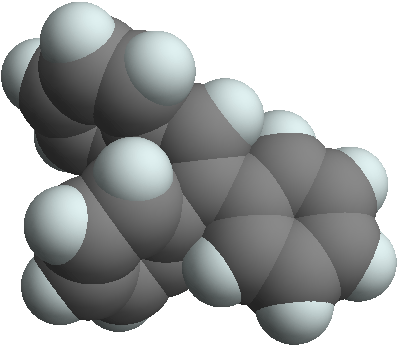
3D structure
Basic properties
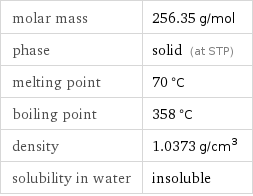
molar mass | 256.35 g/mol phase | solid (at STP) melting point | 70 °C boiling point | 358 °C density | 1.0373 g/cm^3 solubility in water | insoluble
Units

Solid properties (at STP)

density | 1.0373 g/cm^3 vapor pressure | 5×10^-5 mmHg (at 25 °C) refractive index | 1.6292
Units

Thermodynamic properties
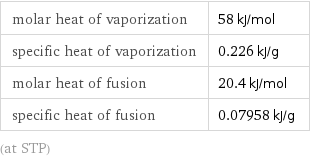
molar heat of vaporization | 58 kJ/mol specific heat of vaporization | 0.226 kJ/g molar heat of fusion | 20.4 kJ/mol specific heat of fusion | 0.07958 kJ/g (at STP)
Chemical identifiers
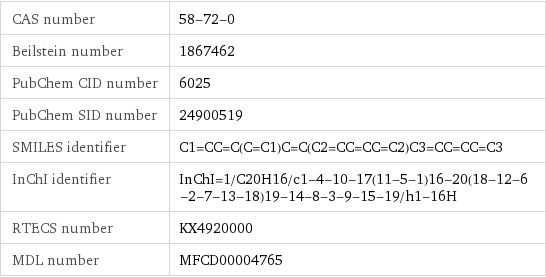
CAS number | 58-72-0 Beilstein number | 1867462 PubChem CID number | 6025 PubChem SID number | 24900519 SMILES identifier | C1=CC=C(C=C1)C=C(C2=CC=CC=C2)C3=CC=CC=C3 InChI identifier | InChI=1/C20H16/c1-4-10-17(11-5-1)16-20(18-12-6-2-7-13-18)19-14-8-3-9-15-19/h1-16H RTECS number | KX4920000 MDL number | MFCD00004765
Safety properties

flash point | 165 °C lower explosive limit | 0.4% (concentration in air) upper explosive limit | 5.3% (concentration in air)

DOT hazard class | 4.1 DOT numbers | 1325
Toxicity properties

RTECS classes | tumorigen | reproductive effector